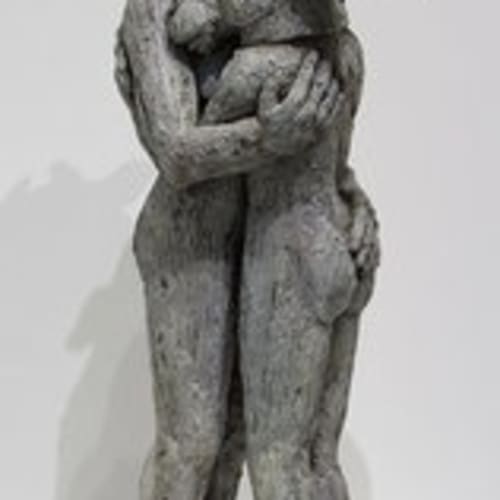Sophie Ryder's mythical sculptures belong to a world that is all their own. Whether dancing in bronze or embracing in her signature steel wire mesh, her enduring characters bear a sense of familiarity and history that is ultimately rooted in her artistic practice. Her work does echo art's history. The Minotaur, for instance, originates in the myths of Minoa, and Ryder's more tender, loving figure is indebted to Picasso's interpretation. Meanwhile Ryder's highly personal counterpoint to the Minotaur, the Lady-Hare, might be seen to draw on a very different strand of mythology, English rural mysticism, harnessing the nocturnal animal's association with the cycles of the moon, fertility and feminine sexuality. Yet any symbolism in her work is largely subliminal and the logic at each character's core is intuitive, a reflection of Ryder's deep love of nature and incisive understanding of the human condition.
Wild and organic, the seeds of Ryder's distinctive sculptures are immediately discernible in her personal world. The child of a French mother and English father, she enjoyed a rather Bohemian upbringing, spending long summers on her mother's farm and vineyard in the south of France, largely without the constraint of any clothing. Her remarkable home in the Cotswolds, Lampits Farm, is wilfully rustic. Both her home and a showcase for her monumental and small-scale sculptures, the space was lovingly crafted by Ryder and her former husband. They heaved stone from the land by hand to make bricks, bought 10 Cotswold roof tiles and made moulds to cast their own, made all doors and windows on site, and Ryder forged all of the metalwork herself. They even planted 4,000 trees to create the woodland that Ryder now runs around daily, accompanied by her beloved lurcher dogs.
Yet Ryder's sculptures do not simply reflect nature. Like the most enduring myths, their wild forms embody human feelings and relationships. This is perhaps most palpable in the Lady-Hare, whose female body is based on Ryder's own. A deeply personal character for the artist, she allows her anonymity and complete openness in her incisive explorations of emotion, love and sexuality. This autobiographical dimension is more explicit in Ryder's recent work, where the hare's head is delineated as a mask. Like all masks it imparts a degree of anonymity, and with it a freedom of expression. In 1994 her sculpture of five Minotaurs was banned from exhibition in Winchester Cathedral because of the prominence of their genitalia, and she continues to combine in her work an ethereal sense of mysticism with a very direct modelling of the figures. Ryder is fiercely intelligent - after being expelled she completed both O Levels and A Levels in a single year to get into art school - but works in a largely intuitive manner. Distilling feelings and relationships into wild, magical forms, her sculptures show us our own inner states with newfound clarity and joy.

